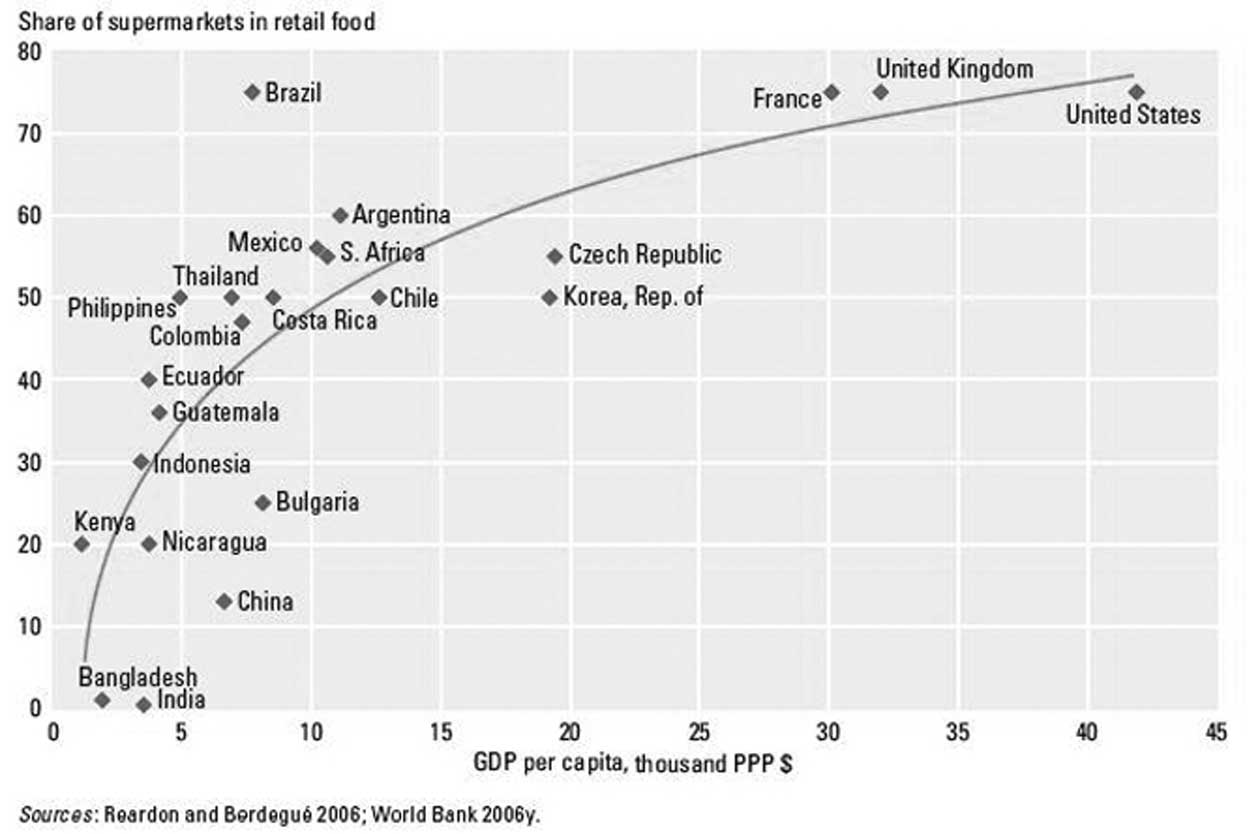Own brand (private labels) are still rising in the European supermarket scene with an average 26% market share in Western Europe (Table 2-9). Growth is strong in parts of CEE—the share of private label products in Hungary was 15% in 2003 and own-brand goods account for around
Table 2-7. Market structure of retail in Western Europe, based on market shares of top 5 retailers, based on 1999 data.
Source: Dobson et al., 2001.
Table 2-7. Market structure of retail in Western Europe, based on
market shares of top 5 retailers, based on 1999 data.
| Country |
Market structure |
| Austria |
Asymmetric oligopoly |
| Belgium/Lux |
Asymmetric oligopoly |
| Denmark |
Duopoly |
| Finland |
Duopoly |
| France |
Asymmetric oligopoly |
| Germany |
Symmetric oligopoly |
| Ireland |
Asymmetric oligopoly |
| Italy |
Unconcentrated |
| The Netherlands |
Dominant firm |
| Portugal |
Duopoly |
| Spain |
Asymmetric oligopoly |
| Sweden |
Dominant firm |
| UK |
Asymmetric oligopoly |
Source: Dobson et al., 2001.
|
|
25% of the total Tesco revenue in Hungary. The tight price squeeze forced by supermarkets has been responsible for own brand manufacturers such as Northern Foods struggling with profitability.
"Trade spend" is another important feature of European retail, also known as marges arrières (back margins). Supermarkets have been able to use their gatekeeper position to make money on the buy side. This "trade spend" for suppliers to secure business with supermarkets comprises reimbursements to the retailer for the range of products it carries and promotions it carries out and includes supplier rebates, overriders (a discount or rebate related to the performance of the customer, paid in retrospective), unilateral deductions from money due or even demands for ad hoc cash payments. "A typical big European retailer might extract the equivalent of 10% of its total revenues via trade spending" (Economist, 2003).
Discounters are a growing part of the European food retail landscape with some notable exceptions such as the UK and Ireland. Discounters are a huge part of the market in Germany—in 2003, Germany accounted for 43% of Western Europe's 32,500 discount stores. But deep discounting is also growing fast in France, where there is a growing emphasis on price.
Buying groups or "international purchasing and marketing organizations" are means by which supermarket companies and consortia can increase their buyer power especially when negotiating with the big brand manufacturers. This is demonstrated by the GNX platform offering for |

